
Planetary Picture of the Day
Week of March 20, 2023
Odd craters on Hyperion, pancake domes on Venus, and noctilucent clouds on Mars.
Monday, March 20, 2023
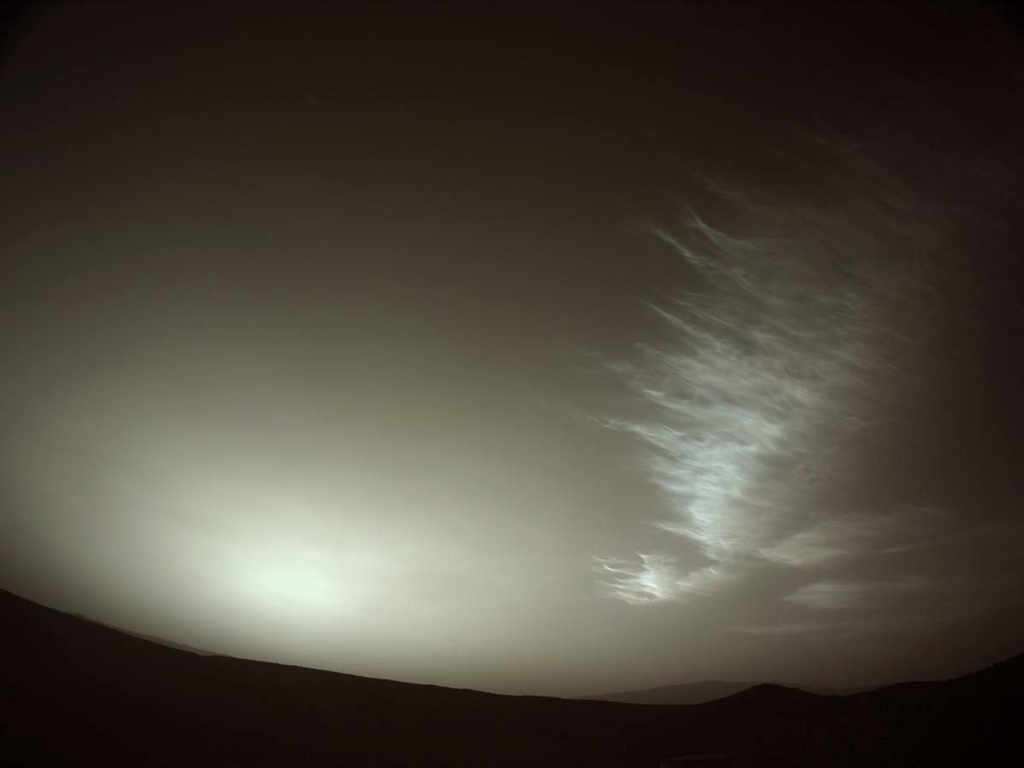
Clouds on Mars
NASA's Mars Perseverance rover acquired this image of high-altitude, noctilucent clouds using its onboard Left Navigation Camera (Navcam). The camera is located high on the rover's mast and aids in driving. This image was acquired on March 18, 2023 (Sol 738) at the local mean solar time of 05:20:41.
Tuesday, March 21, 2023
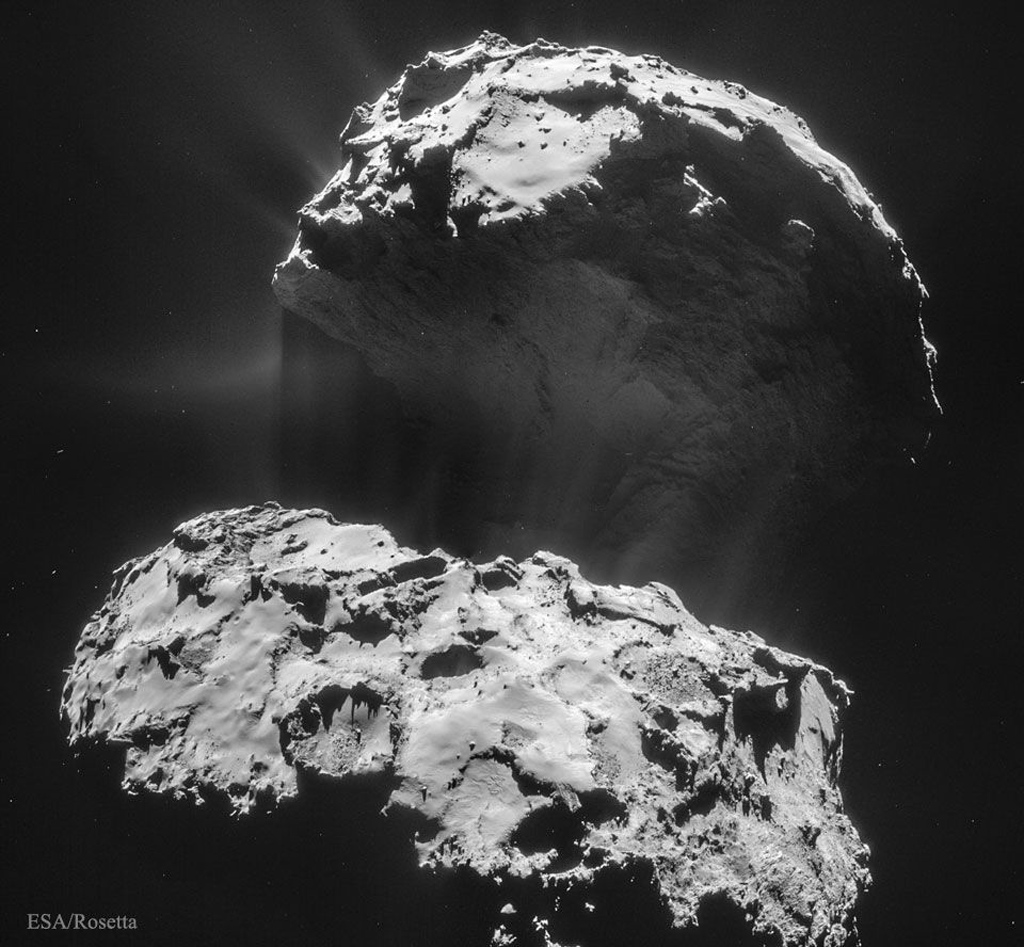
Comet 67P Creates Its Dust Tail
Where do comet tails come from? There are no obvious places on the nuclei of comets from which the jets that create comet tails emanate. One of the best images of emerging jets is shown in the featured picture, taken in 2015 by ESA's robotic Rosetta spacecraft that orbited Comet 67P/Churyumov-Gerasimenko from 2014 to 2016.
The picture shows plumes of gas and dust escaping numerous places from Comet 67P's nucleus as it neared the Sun and heated up. The comet has two prominent lobes, the larger one spanning about 4 kilometers, and a smaller 2.5-kilometer lobe connected by a narrow neck. Analyses indicate that evaporation must be taking place well inside the comet's surface to create the jets of dust and ice that we see emitted through the surface. Comet 67P loses in jets about a meter of radius during each of its 6.44-year orbits around the Sun, a rate at which will completely destroy the comet in only thousands of years.
In 2016, Rosetta's mission ended with a controlled impact onto Comet 67P's surface.
Wednesday, March 22, 2023
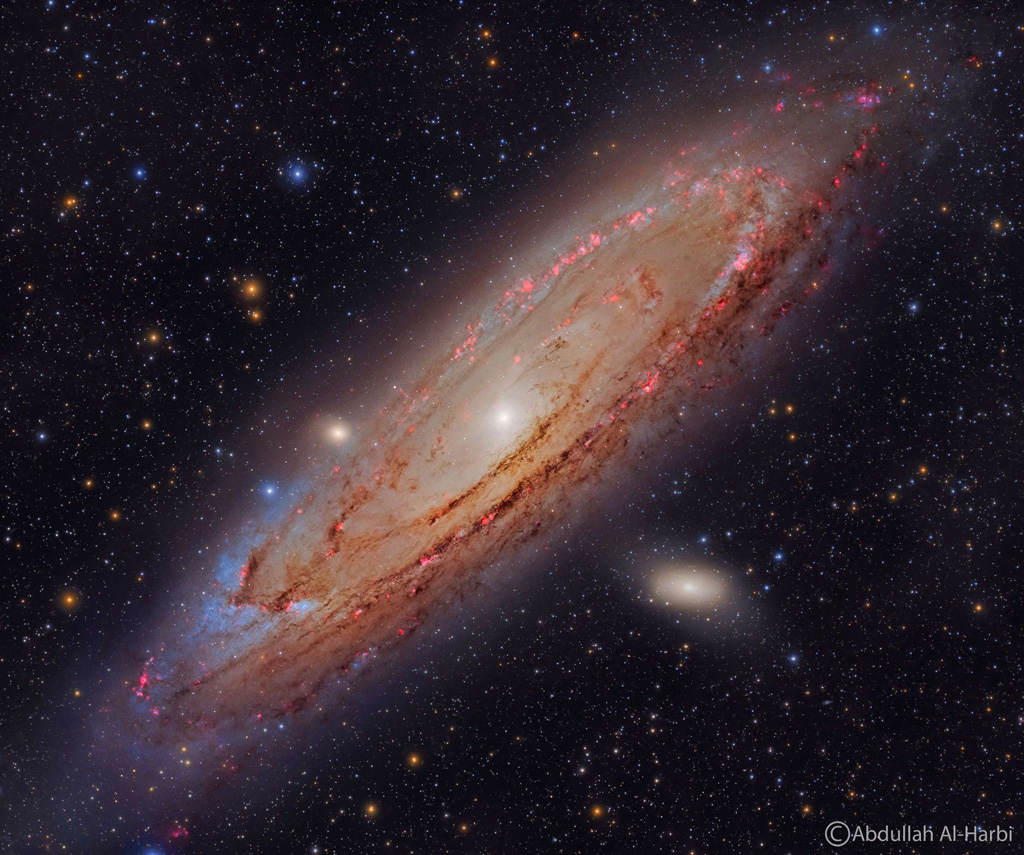
Andromeda
The Andromeda Galaxy is about 2.58 million light-years away from Earth, and in this detailed image, we can see both of the satellite galaxies M110 (below, right) and M32 (above, left). The image hydrogen details were boosted with H-alpha data around three hours. Total integration time was about fifteen hours. Telescope: Askar FRA600; camera: QHYCCD QHY268 Pro M.
Thursday, March 23, 2023
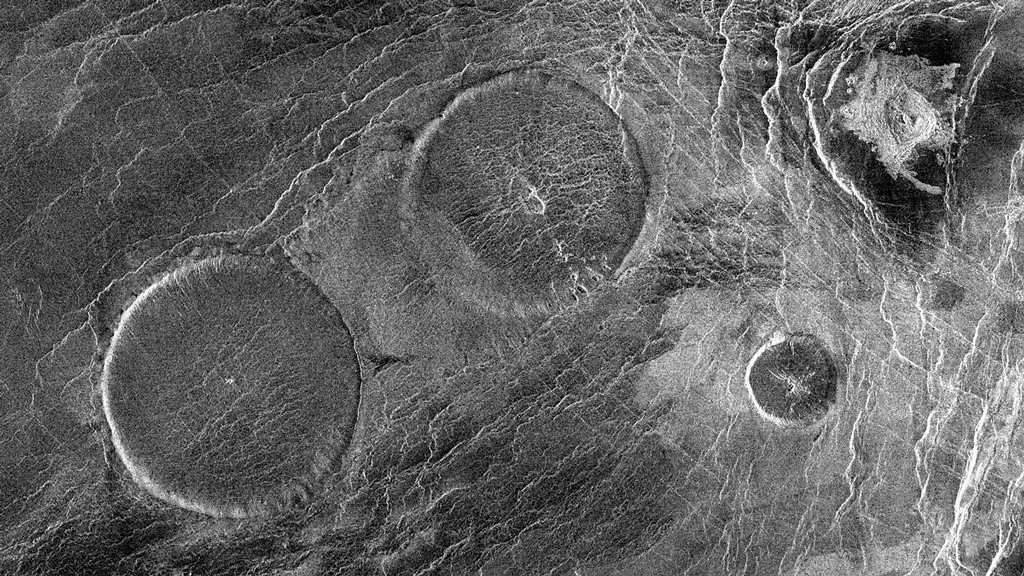
"Pancake Domes" on Venus
A pancake dome is an unusual type of lava dome found on the planet Venus. They are widely scattered on that planet and often form groups or clusters, though with smaller numbers of pancake domes in each group than is typical for the more common shield volcanos. This Magellan full resolution mosaic shows an area 160 kilometers by 250 kilometers in the Eistla region of Venus. The two largest domes are about 65 km across and thought to be made of silica-rich magma that oozes out like toothpaste.
Friday, March 24, 2023
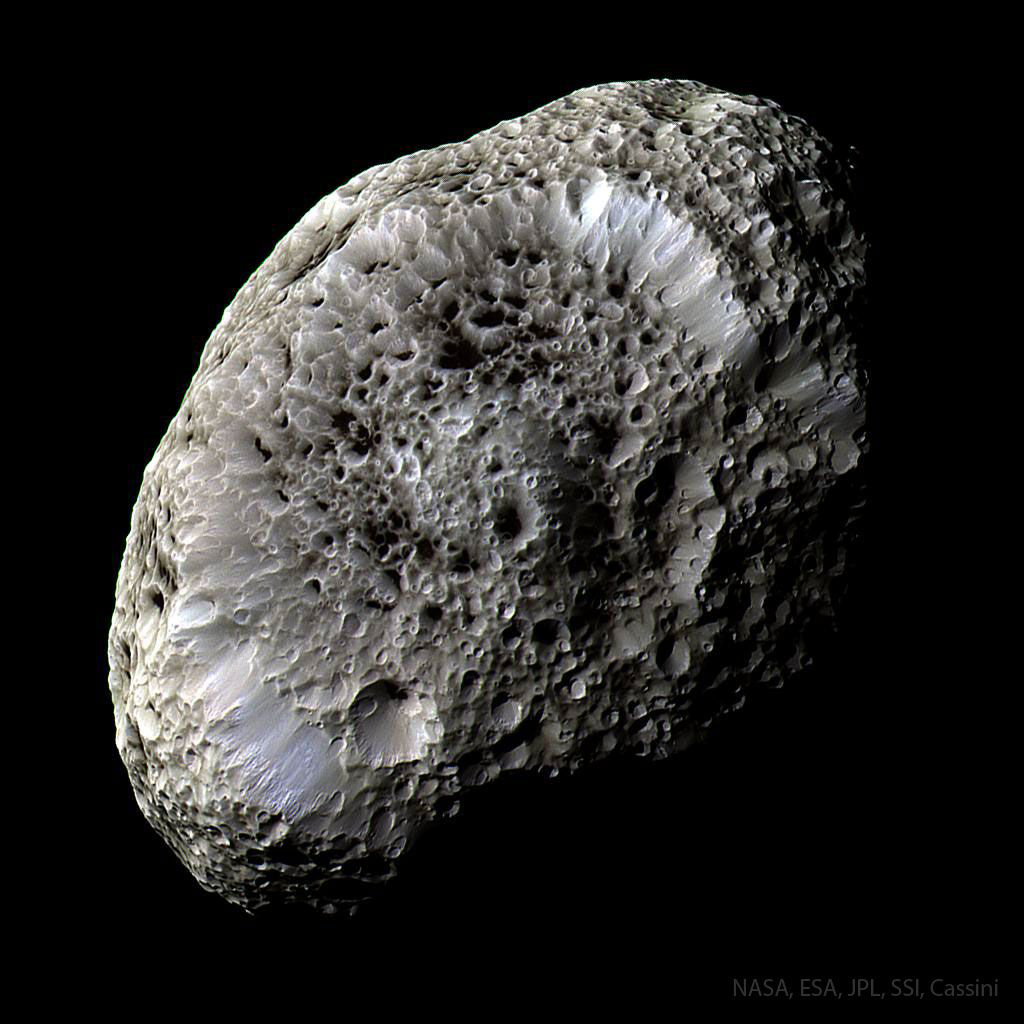
A Moon With Odd Craters
What lies at the bottom of Hyperion's strange craters? Noone knows. To help find out, Cassini took this image, containing unprecedented detail, as the spacecraft swept past the sponge-textured moon in late 2005.
The image shows a remarkable world strewn with strange craters and odd surfaces. At the bottom of most craters lies some type of unknown dark material. Inspection of the image shows bright features indicating that the dark material might be only tens of meters thick in some places. Hyperion is about 250 kilometers across, rotates chaotically, and has a density so low that it might house a vast system of caverns inside.





